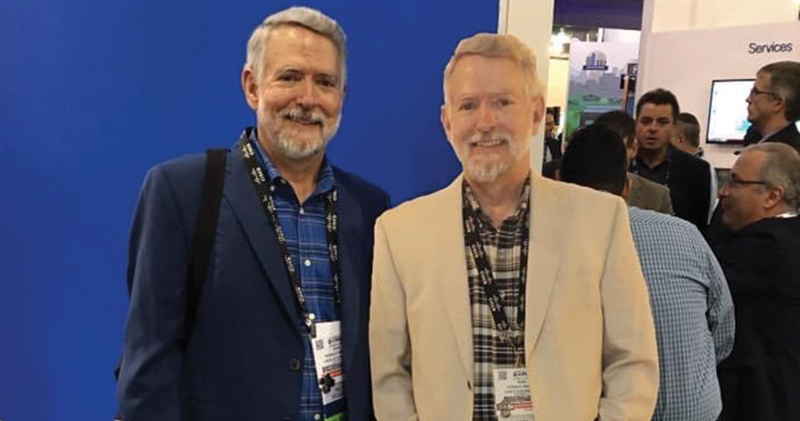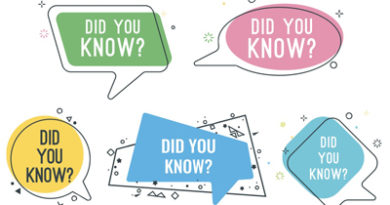Reflections on 50 Years in Cable
By Ron Hranac
You’ve probably heard the saying, “time flies when you’re having fun.” That certainly applies to my career in the cable industry. It’s hard to believe that I’ve been in the business for 50 years. Indeed, I’m still wondering where the time went.
Interesting anecdote: My first exposure to what we now call cable TV happened during my childhood in the late 1950s. I remember seeing big metal boxes on utility poles, which I later found out housed vacuum tube amplifiers used by my hometown cable company. At the time I had no idea what those boxes were for or what cable was (back then it was called CATV), but some family friends had cable service at their house. Their kids could watch Captain Kangaroo weekday mornings, while my sister and I could watch it only on Saturday, using a black-and-white TV set with rabbit ears to pick up the local over-the-air Ch. 3.
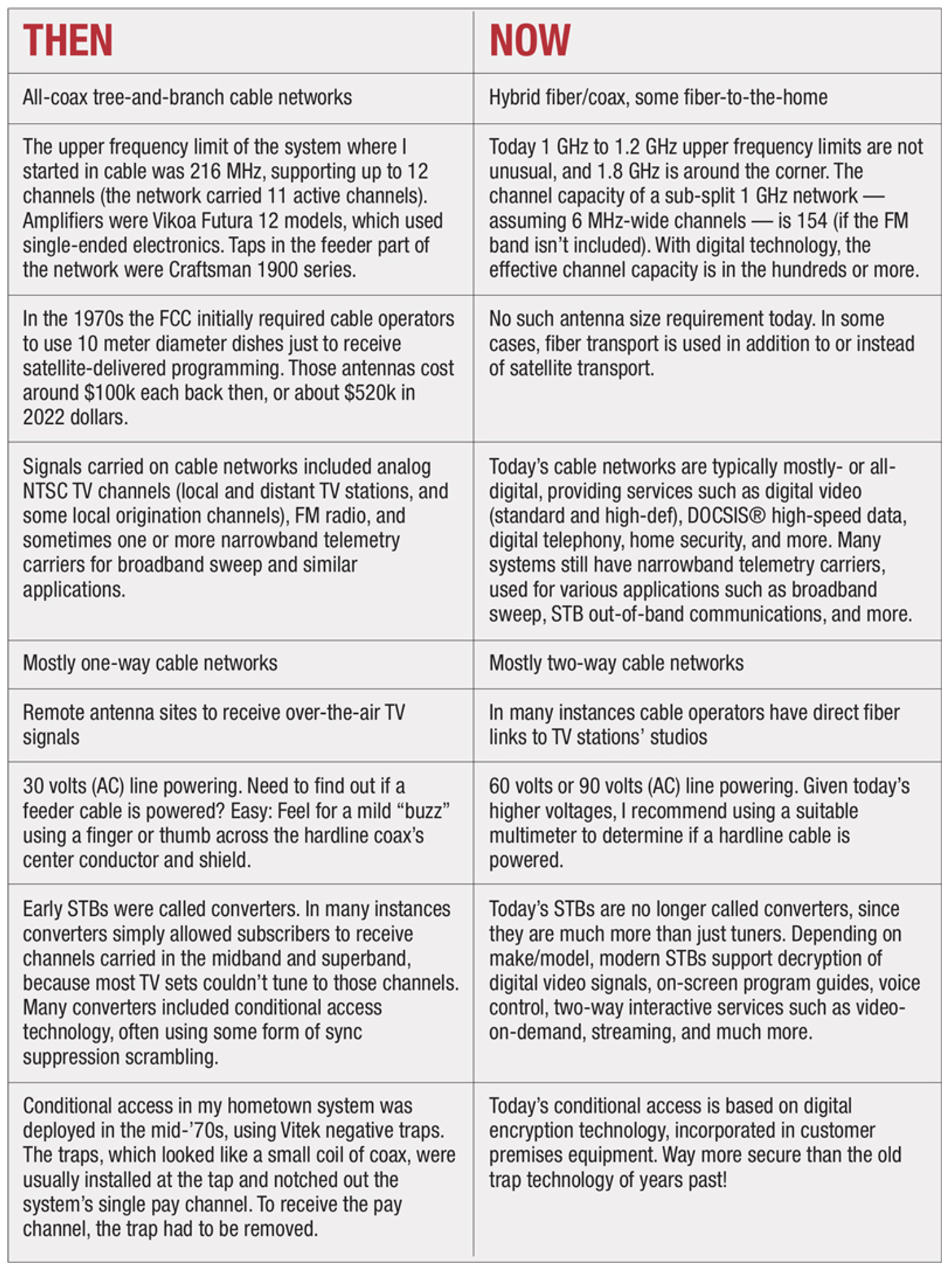
Coincidentally, I went to work in that same system in 1972, beginning my career in October of that year with TelePrompTer Cable TV. I moved to Jones Intercable in late ’79, and held various engineering roles for the next almost 11 years. In the 1990s I worked for consulting firm Coaxial International, and had the opportunity to travel the world. Following a one-year stint at High Speed Access Corp., I joined Cisco in 2000, where I remained until retirement. I also wrote for Communications Technology magazine and several of its sister publications (International Cable, Installer Technician, Communications Construction) from mid-1985 through the end of 2012.
I mostly retired at the end of 2020. Why “mostly”? Well, it’s hard to keep this ol’ cable dawg completely out of the business. I remain active in standards and specifications development committees and working groups with CableLabs, IEEE, and SCTE, and continue to write for Broadband Library.
For the most part I’ve worked on the technical side of our industry, going back to my first day on the job a half century ago. I’m a geek through and through, and would argue that working in cable — for me, anyway — has for the most part been like getting paid for a hobby. As I noodled on the past 50 years for this article, I thought it might be of interest to compare what technology was like back then with what it’s like today. The accompanying table, which is by no means comprehensive, summarizes a few observations about some of the major differences between tech of the 1970s and now. Thinking back, there’s no question that the only constant has been change.
Speaking of technology …
It’s been amazing and a lot of fun to have seen and/or worked with such a wide range of technology during the past five decades.
Here’s my top 10 list of tech that has, in my opinion, had a substantial impact on the cable industry (in no particular order):
- Change from single-ended amplifier technology to push-pull amplifier technology, which allowed expanding channel capacity beyond 12. (The switch from vacuum tube amplifiers to transistorized amplifiers happened before my start in cable.)
- Multichannel AML microwave — nice way to break up lengthy amplifier cascades.
- Use of geostationary satellites by the cable industry for content distribution, and the launch of cable-specific programming delivered by those satellites: CNN, MTV, Discovery, HBO, Showtime, and seemingly countless others. Trivia question: What was the first program transmitted to a handful of cable headends via satellite in 1975? (You’ll find the answer at the end of the article.)
- Addressable conditional access in customer premises equipment.
- What we now call hybrid fiber/coax architectures. The use of multi-channel analog intensity modulation in optical fiber links (aka AM fiber links) resulted in smaller failure groups, amplifier cascade reduction, and improved quality and reliability.
- Widespread deployment of two-way.
- Standardized (DOCSIS-based) high-speed data transmission in cable networks.
- Distributed access architecture, or DAA, technology (R-PHY, R-MAC/PHY, FMA, digital fiber links, etc.).
- Analog reclamation, deployment of digital video.
- Test equipment evolution: Jerrold 727 signal level meter, the solid-state replacement for the vacuum tube 704 (I used both); 8590 series spectrum analyzers from Hewlett Packard, with cable-specific firmware; the Hukk CR-1200 QAM analyzer; Avantron/Sunrise Telecom AT-2000 series analyzers; today’s handheld instruments with embedded D3.1 modems and other advanced tech.
People
As much fun as the technology part of our industry has been, the people I’ve known and worked with have without a doubt been the best part of the last 50 years. I’ll always be grateful to Bill Raschka, the guy who hired me back in ’72. I feel fortunate to have met industry tech pioneers such as Len Ecker and Ken Simons. There is no way I could list (or even remember) everyone who had an impact on my career, but I do want to mention some of my other colleagues at TelePrompTer: Mike Harris, Ray Rohrer, Dee Miller, Walt McCall, Jeff Tarbert, Jack Milligan, Wes Scoles, two Bobs (Simmons and Munden), and Del Hallberg. They put up with seemingly never-ending questions and occasional arguments, and were always willing to share what they knew.
Paying it forward
I’ve tried to follow the examples of my early colleagues and mentors. They encouraged me to keep learning, and their willingness to share what they knew with a then-wet-behind-the-ears kid made a big impression. How best to share? I’m extremely grateful to have had the opportunity to write and publish hundreds of articles and papers, contribute to standards and specs, and speak at numerous technical seminars, conferences, and trade shows. To quote a famous Jedi Master, “Pass on what you have learned.”
Looking toward the future
I’ve never been very good at reading a crystal ball, but it’s safe to say that change will continue in pretty much everything we do, the technology we use, and the services we provide. HFC architectures aren’t going away anytime soon, fiber will continue to get closer to our subscribers (yes, FTTH will be ubiquitous one day), and multi-gigabit-class data speeds will be the norm. Look for a lot more “smarts” in our headend, plant, subscriber, and test equipment. Whatever the networks of the future look like, they will almost certainly still fit the description coined by Jones Intercable’s Glenn Jones in the 1980s: electronic pipelines.
Would I do it again? In a heartbeat!
Here’s the answer to that trivia question: “Thrilla in Manila,” the boxing match between Muhammad Ali and Joe Frazier.
—

My first SCTE membership card, from 1979.
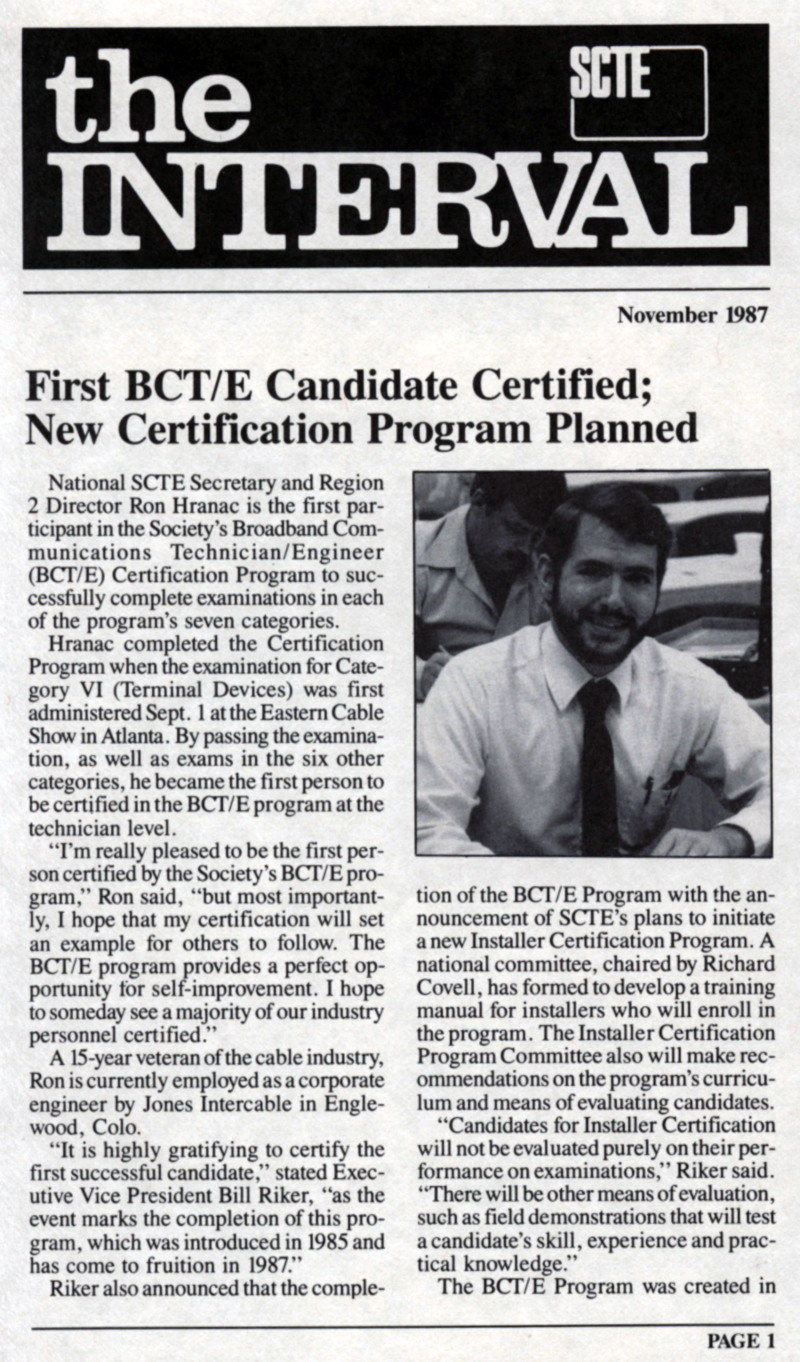
November 1987 Interval article about BCT/E certification

One of many SCTE chapter presentations

My first major project with Jones Intercable was helping with construction of this headend on Northern California’s Cobb Mtn. in 1980.

Example of the Craftsman 1900 series taps that were used in the system where I started.Equipment photo taken at The Cable Center; used with permission of the Barco Library, The Cable Center.

Engineering field work in northeastern China, circa mid-1990s.
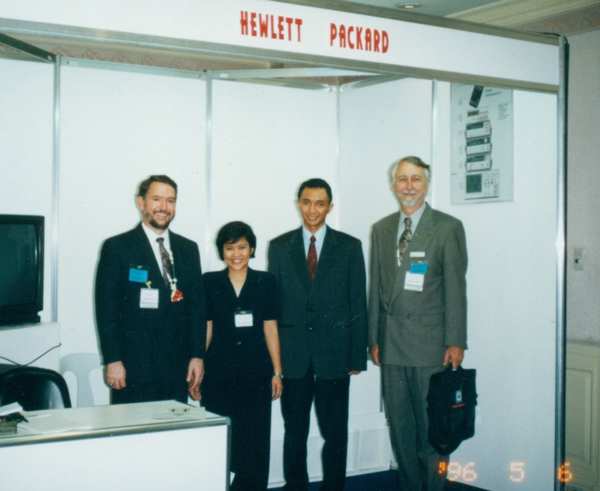
Helping Hewlett Packard with customer training in the Philippines.
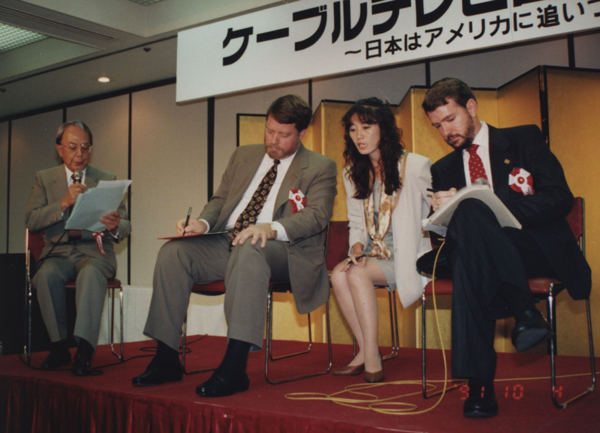
Industry icon Jim Chiddix and I teamed up to speak at a conference in Japan.

Remember overhead projectors? This is from a technical presentation in the 1980s.

SCTE’s Bill Riker and me clowning around at one of the early Cable-Tec Expos.
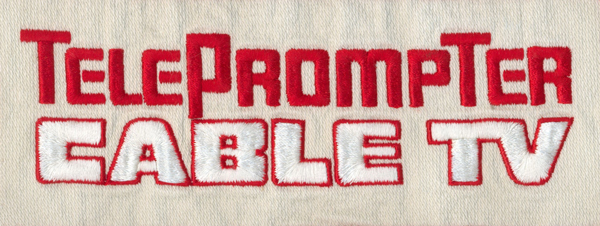
Patch from one of my TelePrompTer company shirts, circa 1970s.
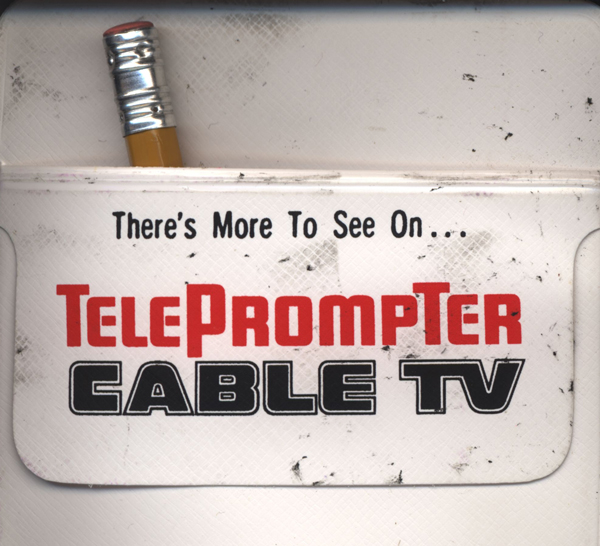
Yes, I used a pocket protector way back when.
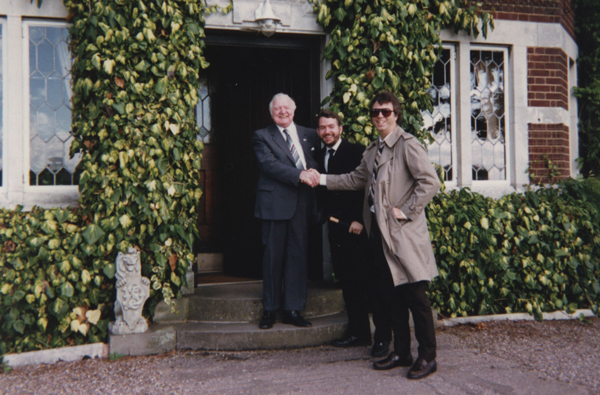
Bill Riker and me meeting with the U.K. SCTE’s Tom Hall, circa late 1980s.
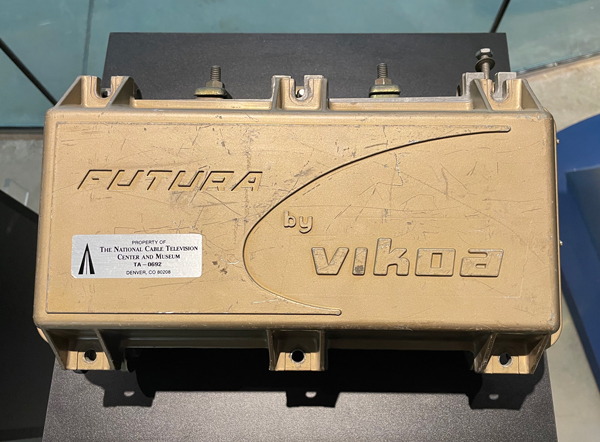
Example of the Vikoa Futura trunk amplifiers that were used in the system where I started. Equipment photo taken at The Cable Center; used with permission of the Barco Library, The Cable Center.
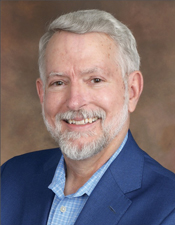 Ron Hranac
Ron Hranac
Technical Editor,
Broadband Library
rhranac@aol.com
Ron Hranac, a 50 year veteran of the cable industry, has worked on the operator and vendor side during his career. A Fellow Member of SCTE and co-founder and Assistant Board Member of the organization’s Rocky Mountain Chapter, Ron was inducted into the Society’s Hall of Fame in 2010, is a co-recipient of the Chairman’s Award, an SCTE Member of the Year, and is a member of the Cable TV Pioneers Class of ’97. He received the Society’s Excellence in Standards award at Cable-Tec Expo 2016. He was recipient of the European Society for Broadband Professionals’ 2016 Tom Hall Award for Outstanding Services to Broadband Engineering, and was named winner of the 2017 David Hall Award for Best Presentation. He has published hundreds of articles and papers, and has been a speaker at numerous international, national, regional, and local conferences and seminars.
Images provided by author

